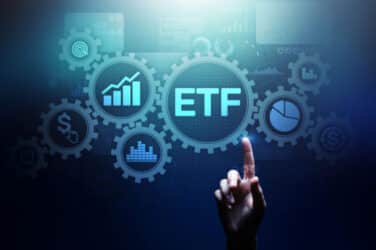What is the state of transaction cost analysis in the U.S. Treasuries market? Markets Media caught up with Josh Holden, Chief Information Officer at OpenDoor Securities, to discuss.
What structural issues in U.S. Treasuries have created a heightened demand for better TCA tools?
Treasuries has always been a dealer-centric market. But post-crisis, dealers have been allocating less balance sheet to off-the-runs and TIPs. There’s less willingness to warehouse those trades, and there’s less risk capital deployed on the trading desk to be able to principal the larger transactions. So liquidity is thinner. Price discovery at the individual trade level is still reasonably good, but not as much for large trade blocks where you really care about market impact. So with less liquidity, a given size will move the market more, and it becomes more important to know where the liquidity is, and which issues are liquid and which aren’t. That has to be a factor in your investment decisions, because it’s going to cost you more money to move larger blocks. So you better have more edge in those, as less liquidity structurally makes TCA a really critical tool.
What are the regulatory considerations when developing TCA tools in U.S. Treasuries?
Treasuries were once exempt from regulation, but that has shifted. For example, while TRACE reporting was initially only required for other asset classes, it is now also a requirement for Treasuries. Similarly, principles like best execution may not have directly applied to trades in the Treasury market, but firms are increasingly multi-asset and they are establishing best practices across different assets. Treasuries have to catch up.
Treasuries have to adopt more stringent requirements for things like best ex and reporting. If you’re forward-thinking, that means you’re thinking not just about what I have to do today, you’re also thinking about how do I have a set of tools so that when the time comes and things are more stringent or more consistent across asset classes, I have the same methodology in Treasuries. We can learn a lot from other markets that have a lot more adoption of the quantitative, metric-based approaches to determining the costs of trading.
What can the Treasuries market learn from TCA tools that have been used in other asset classes?
This speaks a bit to the complacency that we’ve had in Treasuries. For a long time, just going out to a few dealers in competition for given execution was good enough for “best ex.” People adopted that as a check-the-box kind of thing: yes, I went out to three people in comp because that’s the rule of my internal best ex committee. That’s not good enough anymore. First, your trades are probably correlated to some degree, so the information you’re giving up is more impactful. Second, with machine learning and other advanced tools out there, it’s easier for people to discern what’s moving the market and what trades are going through. You’re at an information disadvantage if you’re not factoring that in.
So rather than asking three guys, you want to know how quickly is my trade information making it into the market, how can I measure my implementation shortfall, and what is the market impact for moving a given size. You take all that data and use that to inform your trading decisions. TCA is going to be critical in moving best execution from a check-the-box exercise to a very useful tool that’s defensible when you go and say, “Look, we do this in a very rigorous way that we can demonstrate.” It adds a lot of value.
How is OpenDoor approaching the need for greater and more robust TCA tools?
Any good TCA has to start with good clean data without a lot of noise. If you don’t have that you’re going to wind up benchmarking yourself to an execution you did to a mid-market price that may or may not be the actual mid-market price. At OpenDoor we believe we have demonstrably better pricing. We price 350+ CUSIPs all day long. We have a fundamentally sound approach to how we build those models, from the variety of our different feeds and pricing sources. So we believe we have the best, most stable curve in the marketplace, built on the foundation of relative value, in the sense that we know where these securities are relative to the liquid on-the-runs. We store more than 1.5 million data points per day across those 350 CUSIPs. With that, you can look at the set of executions that you’ve done, and see the immediate cost of those executions.
What did you pay, versus a fair, mid-market, indicative price, and then how did that drift over time? If you had an execution that was in several parts, how quickly did that information of that trade impact the market? What was the ultimate market impact? We’ve done that analysis and we can pretty clearly show that by that TCA analysis that you’re not only saving bid-offer spread by trading on our platform, you’re also not impacting the market in terms of ultimate drift because of the anonymity of what we do. We do say something’s trading, but we keep all of the other information only within OpenDoor.
We also have various liquidity scores and other metrics to assess how liquid we expect the market to be. We use that to evaluate how much should a given trade cost. We have a mid- market price and we also have an idea of where that should trade in terms of bid-ask spread. Given the clear advantages we bring to the table, we believe any serious US Treasury TCA needs to start with OpenDoor.







